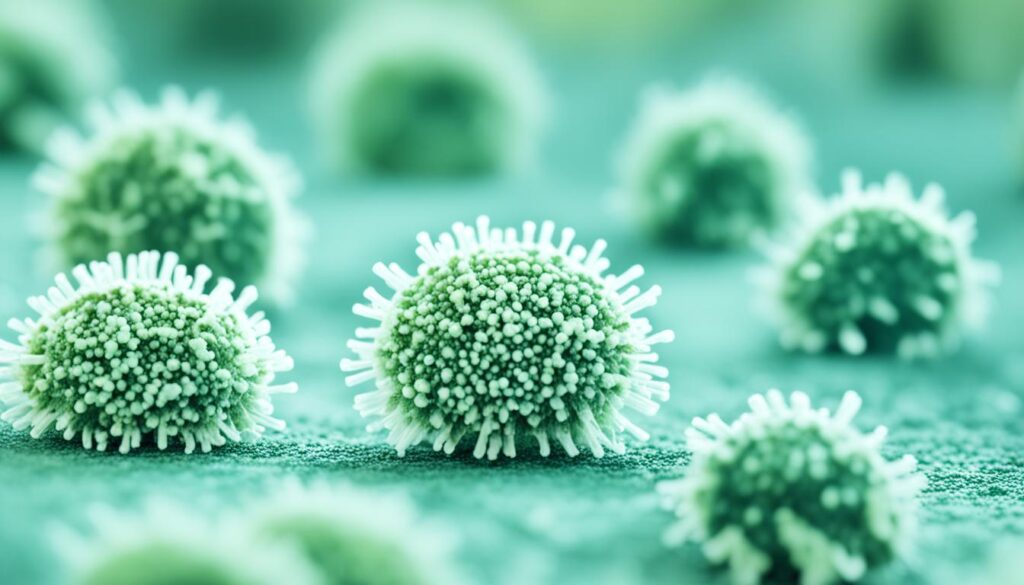
Transforming Your Space with does Mold cause headaches
Are you experiencing chronic headaches and wondering if mold could be the culprit? Indoor mold exposure is a common concern that many homeowners face. Not only can it trigger discomfort but it can also have a significant impact on your overall well-being. In this article, we will explore the potential link between mold and chronic headaches, providing you with valuable information on how to address mold issues in your space.
Key Takeaways:
- Indoor mold exposure may contribute to chronic headaches.
- Mold allergies, mold spores, and mycotoxins may play a role in triggering headaches.
- Proactive measures, such as improving indoor air quality and seeking professional mold assessments, can help alleviate mold-related headaches.
- Mold prevention and remediation are essential for long-term health and well-being.
- If you suspect mold in your space, it’s crucial to contact a professional such as Fix Mold Miami for assistance.
Understanding the Connection between Mold and Headaches
When it comes to mold and headaches, there is a significant relationship worth exploring. Mold allergies, mold spores, mycotoxins, and inflammation all play a role in understanding this connection.
The Role of Mold Allergy
For individuals with mold allergies, exposure to mold can trigger a wide range of symptoms, including headaches. Mold spores, which are tiny reproductive units released by molds, can be inhaled and cause an immune response in sensitive individuals. This immune response, triggered by mold spores, may result in inflammation and lead to headaches.
The Impact of Mold Spores and Mycotoxins
Mold spores not only trigger allergies but can also have direct effects on the body. When inhaled, mold spores can cause irritation and inflammation in the nasal passages and airways, leading to headaches. Additionally, certain molds produce mycotoxins, which are toxic substances that can have various health effects when inhaled or ingested. Mycotoxins have been associated with neurological symptoms, including headaches.
Inflammation and Headaches
Inflammation in the body is believed to play a significant role in the development and severity of headaches. Mold exposure and the subsequent immune response can lead to inflammation, which may contribute to headache symptoms. By addressing the underlying mold issue and reducing inflammation, individuals may find relief from mold-induced headaches.
Understanding the connection between mold and headaches is crucial for those experiencing chronic headaches or suspecting mold exposure in their environment. By identifying mold allergies, recognizing the effects of mold spores and mycotoxins, and understanding the role of inflammation, individuals can take proactive steps to address mold issues and alleviate headaches.

Stay tuned for the next section where we will identify the symptoms of mold exposure and discuss ways to seek relief from mold-induced headaches.
Identifying Symptoms and Seeking Relief from Mold-Induced Headaches
Mold exposure can have various symptoms, and headaches are one of the common discomforts experienced by individuals affected by mold. If you suspect that mold may be causing your headaches, it’s important to identify and address the underlying issue. Here are some symptoms to look out for and steps you can take to seek relief.
Common Symptoms of Mold Exposure
Exposure to mold can cause a range of symptoms, including:
- Headaches: Headaches are often one of the early signs of mold exposure. If you experience frequent or persistent headaches, especially when indoors, mold could be a contributing factor.
- Allergic Reactions: Mold spores can trigger allergic reactions in some individuals, leading to symptoms such as sneezing, coughing, itchy or watery eyes, and a runny or blocked nose.
- Respiratory Issues: Mold can aggravate respiratory conditions like asthma, causing coughing, wheezing, chest tightness, and difficulty breathing.
- Skin Irritation: Exposure to mold can result in skin irritation, including rashes, redness, and itchiness.
- Fatigue: Mold exposure can contribute to fatigue and a general feeling of low energy.
Improving Indoor Air Quality
To alleviate symptoms and reduce mold-related headaches, it’s essential to improve the indoor air quality in your space. Here are some tips:
- Maintain Proper Ventilation: Increase airflow by opening windows or using exhaust fans to prevent moisture buildup, which fosters mold growth.
- Control Humidity Levels: Keep humidity levels below 50% to inhibit mold growth. Consider using dehumidifiers in damp areas.
- Fix Water Leaks: Address any plumbing leaks or water issues promptly to prevent mold from thriving.
- Clean and Dust Regularly: Regular cleaning and dusting can help eliminate mold spores and prevent them from spreading.
- Use HEPA Filters: Invest in high-efficiency particulate air (HEPA) filters for your HVAC system to trap airborne particles, including mold spores.
Importance of Professional Mold Assessment
To effectively address mold-related issues, it’s crucial to enlist the expertise of a professional mold assessment service. A professional assessment can:
- Identify the source and extent of the mold problem
- Determine the type of mold present and any potential health risks
- Provide guidance on proper mold remediation techniques
By relying on professionals, you can ensure a thorough evaluation and tailored solutions for your mold-related headaches.
Mold Prevention and Remediation
Mold prevention and remediation are key steps in tackling mold-related headaches. Here’s an overview of the process:
| Step | Description |
|---|---|
| 1 | Identify and address the source of moisture that is fueling mold growth. |
| 2 | Contain the affected area to prevent the spread of mold spores to other parts of your space. |
| 3 | Remove the existing mold using appropriate cleaning techniques or by hiring professional mold remediation services. |
| 4 | Repair or replace any damaged materials that cannot be salvaged. |
| 5 | Implement preventive measures to minimize the risk of future mold growth, such as improving ventilation and managing humidity levels. |
By following these steps and investing in prevention, you can create a healthier and mold-free environment, ultimately reducing the frequency and intensity of mold-induced headaches.

Conclusion
In conclusion, addressing mold and its potential connection to headaches is essential for maintaining a healthy living environment. By taking proactive measures to prevent mold growth and seeking professional assistance when needed, individuals can minimize the risk of mold-induced headaches and long-term health effects.
Mold headache prevention starts with addressing any existing mold issues in your space. This may involve identifying and eliminating sources of moisture, improving ventilation, and regularly cleaning and inspecting areas prone to mold growth. By creating an environment unfavorable to mold, you can reduce the likelihood of mold-triggered headaches.
While headaches may be a common symptom of mold exposure, it’s important to understand that long-term exposure to mold can have more severe health effects. These can include respiratory issues, allergies, and even neurological symptoms. Therefore, it is crucial to take mold concerns seriously and seek professional assistance when necessary.
If you suspect mold is present in your home or workplace, contacting a reputable mold remediation service like Fix Mold Miami is highly recommended. Their team of experts can conduct thorough mold assessments, identify the extent of the problem, and provide effective remediation strategies. With their professional assistance, you can ensure a mold-free environment and safeguard your health in the long run.




